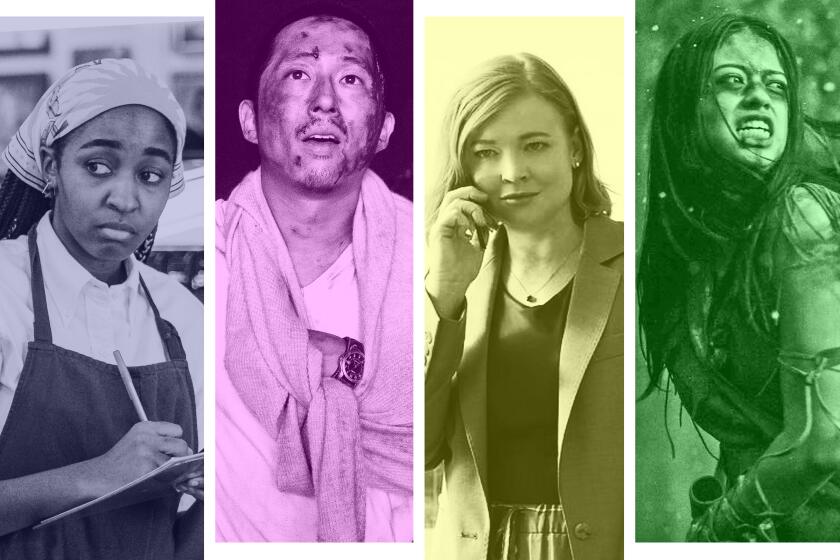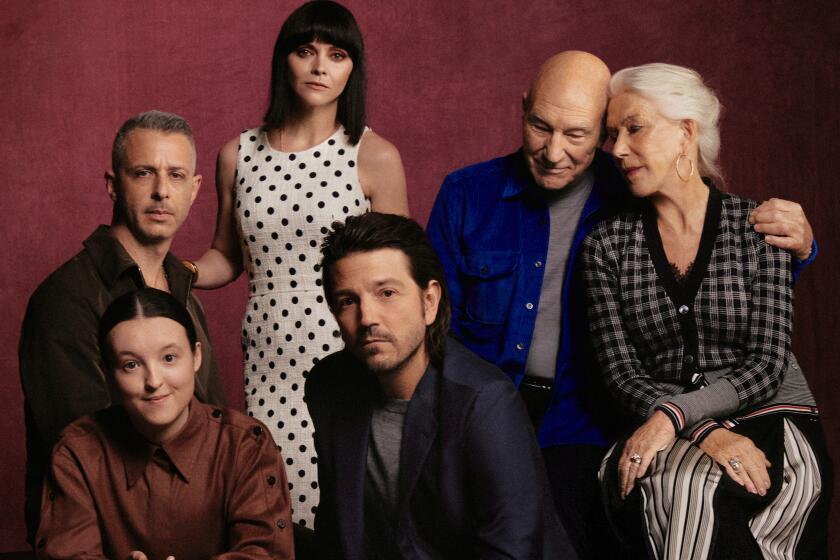Who won the ‘House of the Dragon’ finale fight? Fans of dragons — and cutting-edge VFX
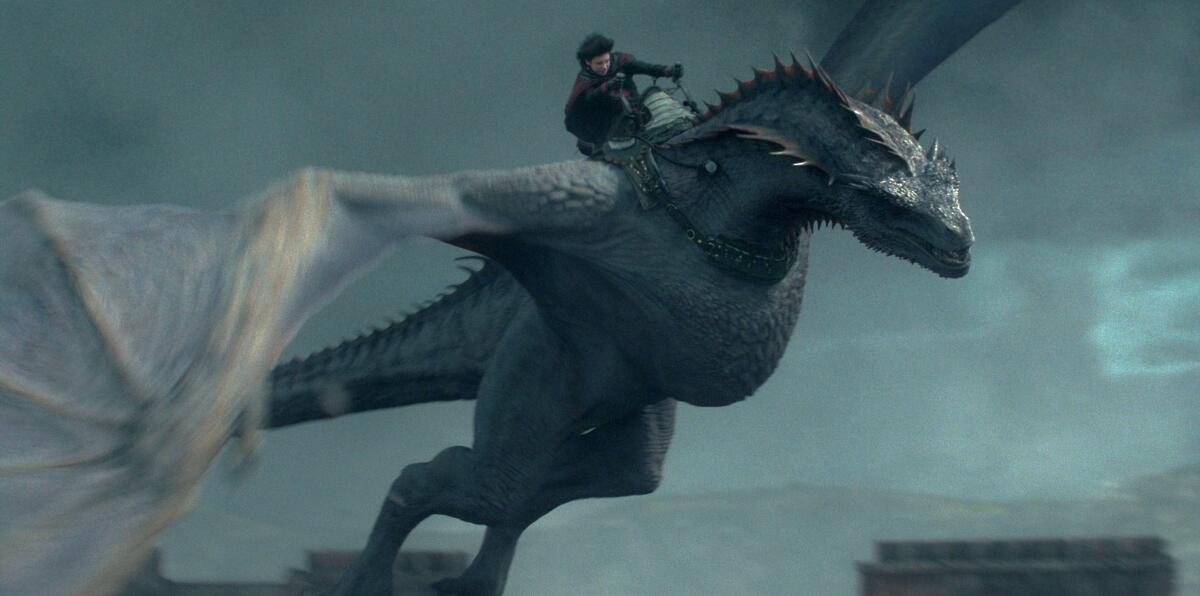
- Share via
The first thing “House of the Dragon” visual effects supervisor Angus Bickerton discussed with showrunners Miguel Sapochnik and Ryan Condal was — surprise — the dragons. The show’s predecessor, “Game of Thrones,” set new standards for the photoreal monsters; it won seven visual-effects Emmys, after all. The prequel would rely on them even more.
“The original series had three dragons; they were all really variations on the same design,” Bickerton says. “We went into this series listing 22 different dragon characters. We only featured nine of them this season. There’re probably gonna be more in Season 2.
“Miguel and Ryan were very keen for each dragon to have its own character. Ryan had spoken a lot to [author] George R.R. Martin, and he always envisaged dragons as being much more colorful and much more ranging in design. So we try to honor that.”
To be sure, the visual effects team had its hands full, especially with the show’s virtual locations and the progressive desiccation of King Viserys I (Paddy Considine) due to a Westeros version of leprosy. But the main attraction was always to be the dragons. They’re present without doing much through its first nine episodes, the VFX/mythical monster version of Chekhov’s gun, waiting to be fired. Then, in the season finale, their full capabilities erupt in a spectacular, thrilling chase and fight to the death that showcases how far VFX have come, even in the short period since “Thrones” concluded in 2019.
Our BuzzMeter panel of veteran TV journalists predicts the winners in 14 categories of the 2023(?) Emmys. You can, too, in our weekly polls.
On one side of the fight is Arrax, a teenage dragon with a young teen human rider (Lucerys, played by Elliot Grihault), the two about the scale of a boy on something the size of an elephant with wings. On the other: 120-year-old Vhagar, largest and oldest of the behemoths, ridden by insolent bully Aemond (Ewan Mitchell).
“Vhagar’s head [alone] is the size of a small, six-person vehicle,” Bickerton says.
In one breathtaking moment, the dragons’ relative size is revealed when Vhagar passes above Arrax, dwarfing him. It’s reminiscent of the classic opening shot of 1977’s “Star Wars”: A small ship is pursued by a Star Destroyer — whose massive bulk seems to go on and on and on.
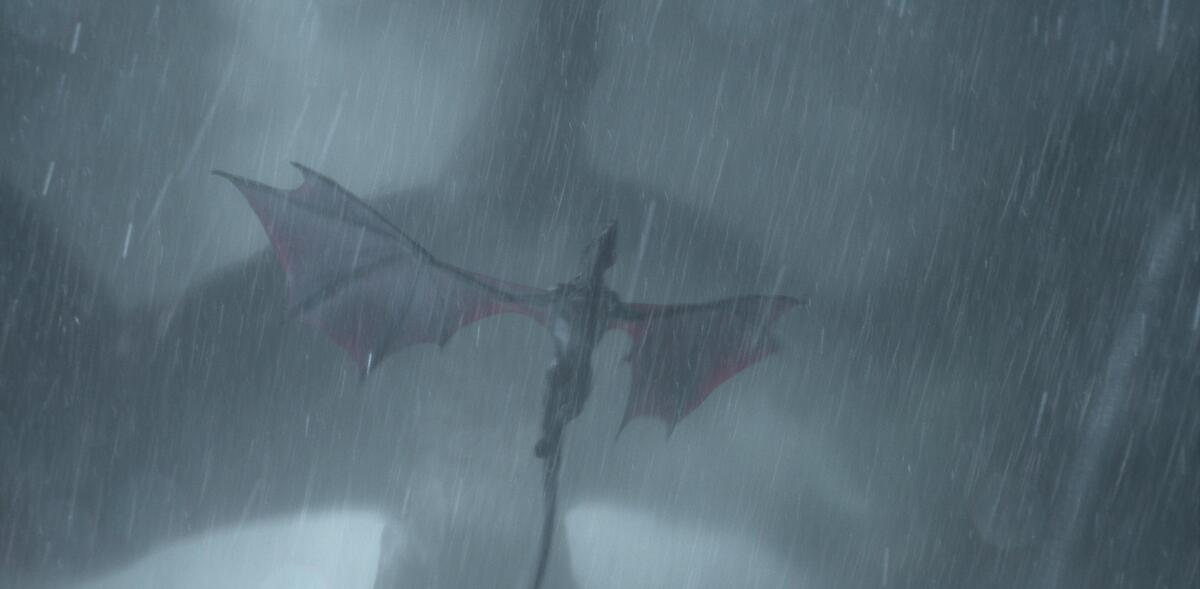
“We talked about trying to reflect their ages and characters in their animation, to reflect their riders,” with whom dragons usually bond and grow together. “In the case of Vhagar, she’s so old, she’s had three riders; she’s no longer beholden to anybody. She’s irascible and ill-tempered and can’t be necessarily controlled. It’s subtle, because you can’t anthropomorphize them too much. You can’t give them a squint or a mini-smile; it has to be animal in performance.
“So for Vhagar, we took references from whales. She has these parasitic birds that live on her, eating mites and bugs off her skin. The rigging and saddles are now cutting into her skin because she’s actually grown around it.”
A major step forward in technology since “Thrones” enabled “House of the Dragon” to capture the sequence at new levels of dynamism: Using the 270-degree LED-screen backing called “the volume” rather than shooting in front of green screens. The volume was 70 feet wide and 85 feet deep, with a 25-foot-high screen and 40 tracking cameras that enabled much more versatile camera moves and longer shots.
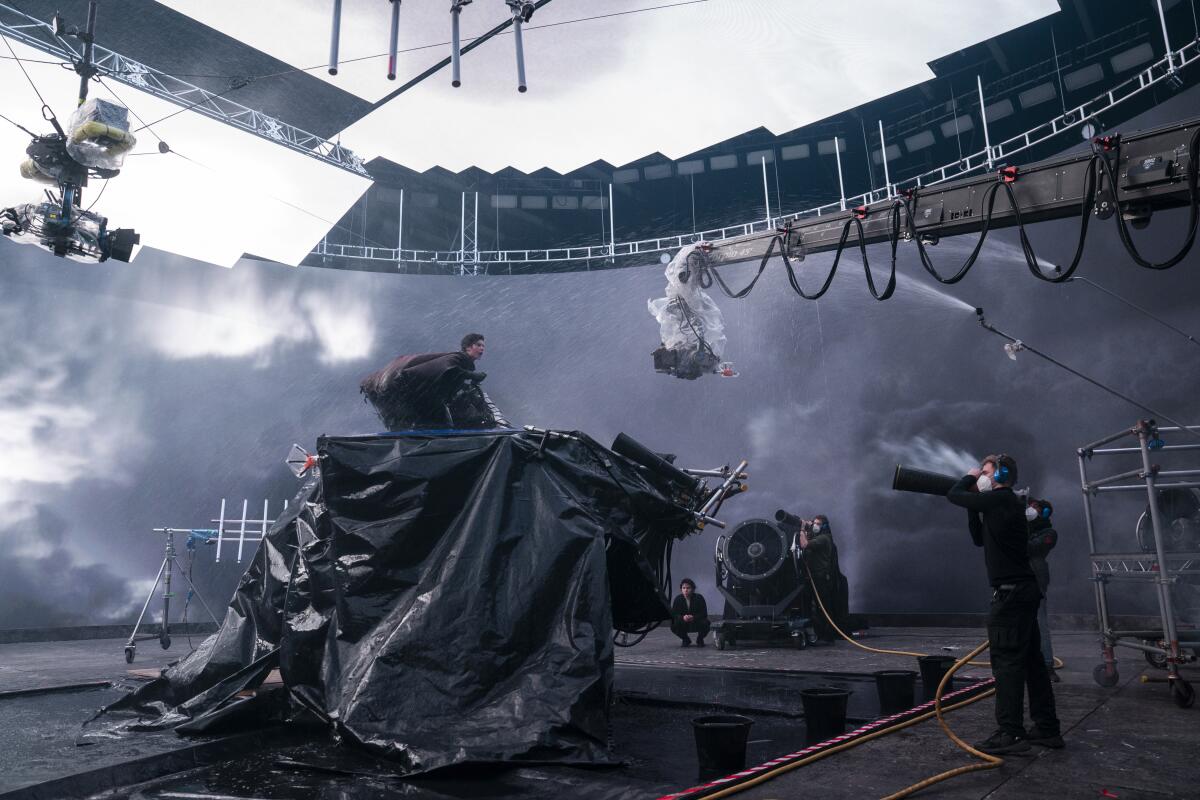
Another change from “Thrones” involved the mechanical-bull-like mounts on which the actors sat to simulate riding — these “motion bases” were more advanced, with more range of action, “more speed and more dynamism” than their forebears.
Condal “kept saying, ‘I want the actors to be holding on for dear life,’” says Bickerton with a laugh.
It took multiple effects houses and multiple processes to weave together the season’s payoff sequence.
“We animated the whole flight in Unreal, then loaded into Third Floor’s ‘Cyclops’ system. This is their particular version of a virtual camera; now you are in the scene, just looking for the coolest angles. We didn’t storyboard and then pre-vis; we did it entirely through these virtual-camera sessions.
“We got very long takes. It’s not an animator sitting down and doing a five-second shot. Our visual effects editor edited that together, then we exported those files to another vendor who re-animated all the dragon stuff.”
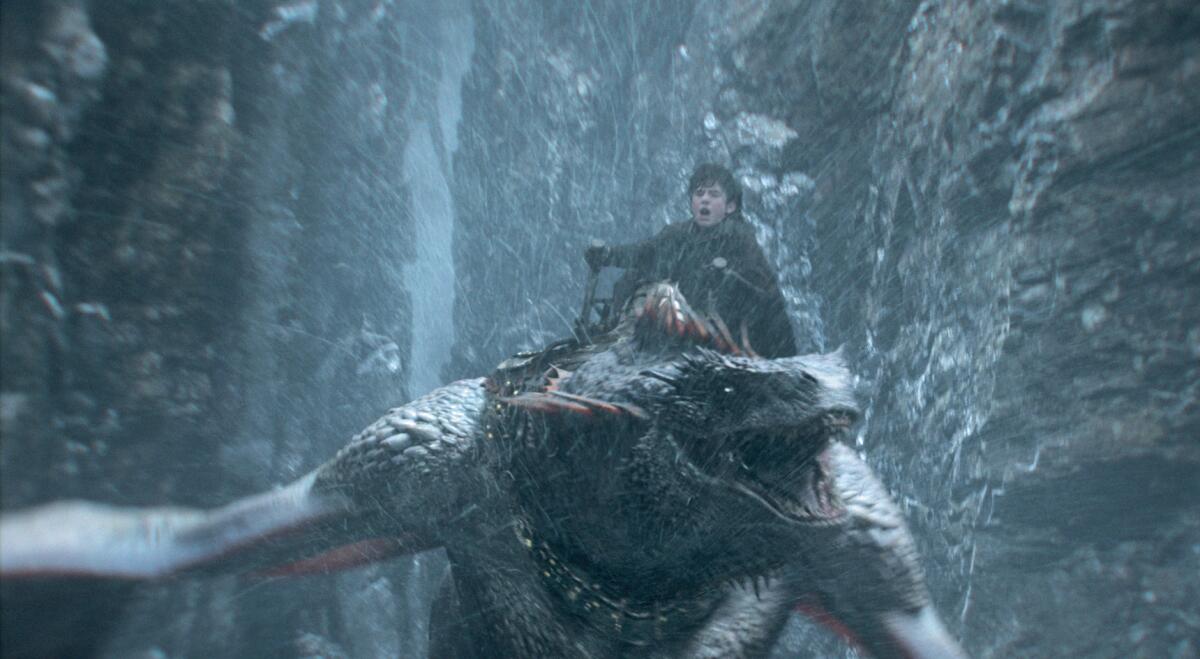
They used all of that information to determine how the actors should be photographed in the volume, fighting through wind and rain on the motion bases — which were then programmed by Third Floor to move in concert with the flight as animated.
“We had a team do what we call a ‘Techvis,’ where you figure out how to translate that animation to the motion base and the camera, because the camera’s moving separately as well, so we’re getting the appropriate shots of them on the dragon backs.”
Though all this required new technologies and incredible levels of computing power, the freedom of the virtual camera in the hands of the cinematographer and director, and the length of the shots now possible, allowed a more instinctive, even human, approach.
“It allowed the performances to change. Sometimes if you’re just doing a three-second shot” and stitching together nothing but a reaction shot here and there rather than getting into the flow of a scene, “you feel like you’re just a component in a big CG effect. If you’re allowed a long take, you feel involved and in the action.”
Though in the end, it was a mix of cutting edge and as old-school as it gets that nailed the shots.
“The best shots we got were when we actually put loads of Vaseline on the camera lens,” Bickerton says. “So we had [actual] wind and rain, but we were literally smearing Vaseline on the lens to get that sort of shooting-in-the-storm cinematography.”
In a roundtable conversation, Diego Luna, Helen Mirren, Bella Ramsey, Christina Ricci, Patrick Stewart and Jeremy Strong dive deep into their appreciation of writers, mothers and “not giving a f--”
More to Read
From the Oscars to the Emmys.
Get the Envelope newsletter for exclusive awards season coverage, behind-the-scenes stories from the Envelope podcast and columnist Glenn Whipp’s must-read analysis.
You may occasionally receive promotional content from the Los Angeles Times.
